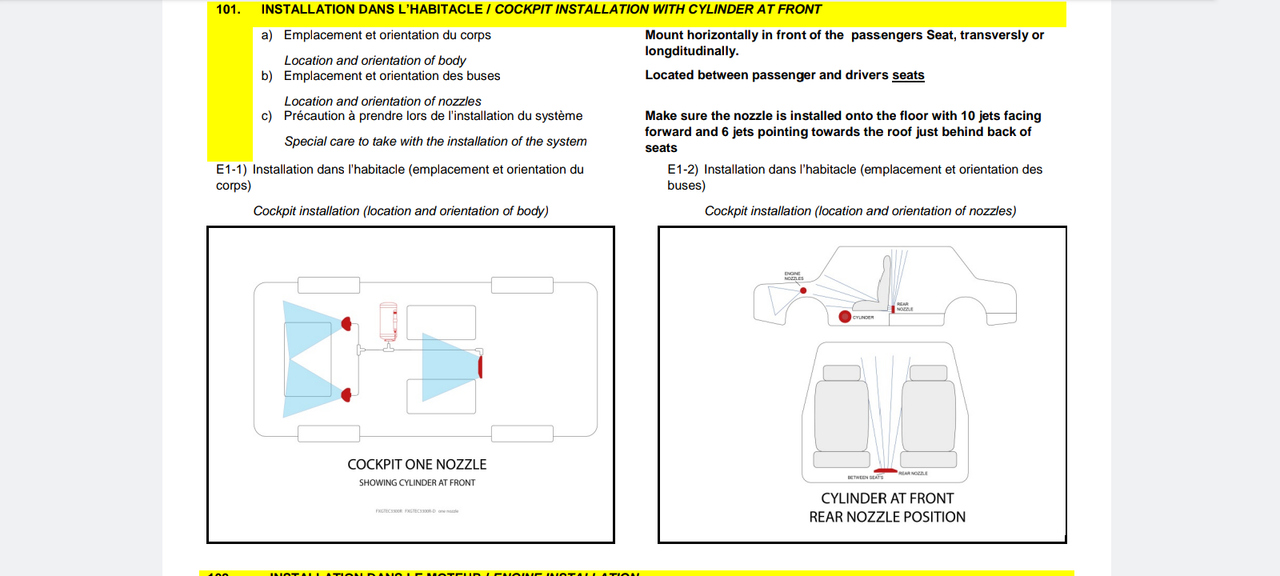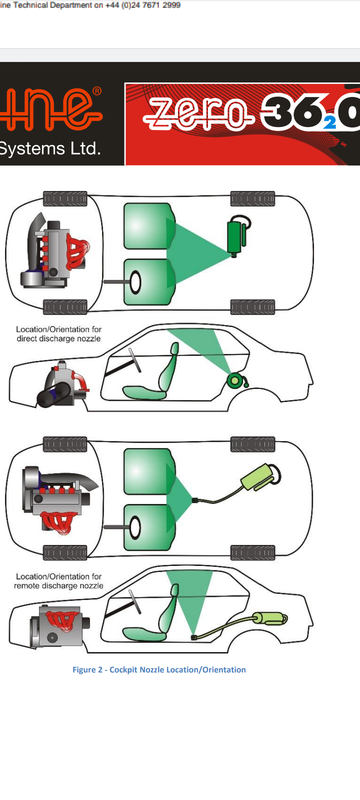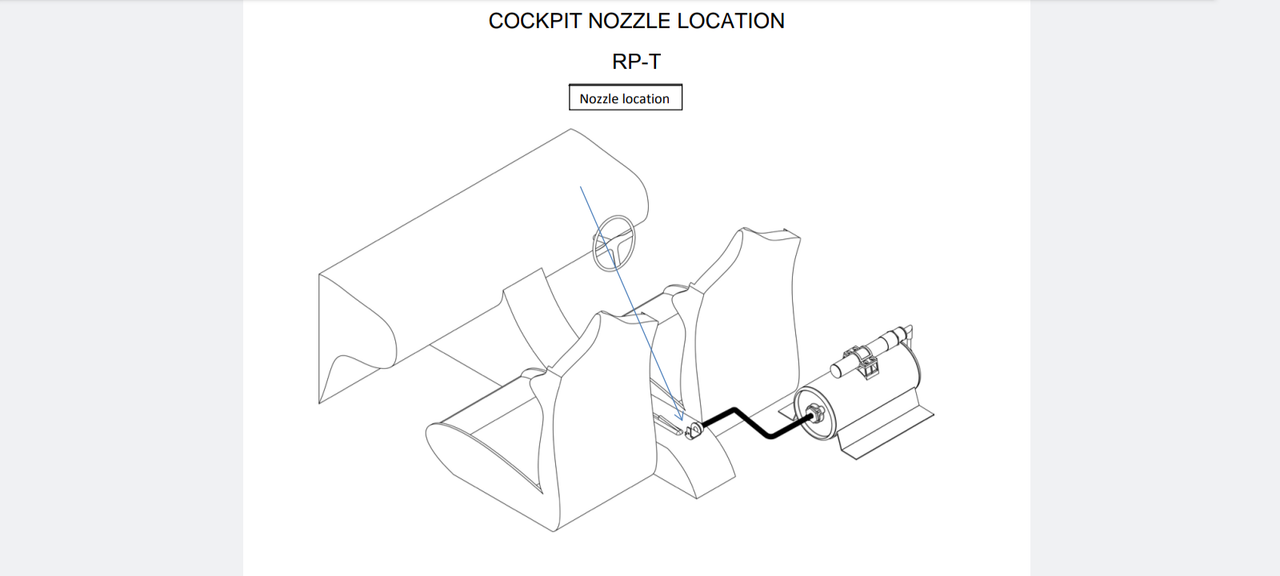Topic: Fire Suppression System installation - Best Practices?
In response to a question in a different subtopic, I decided to look around for authoritative documentation on this subject.
The FIA standard indicates these Suppression Systems are not meant to put out the fire, they're designed to:
SLOW THE DEVELOPMENT
of the fire, and that's an important distinction.
The documents I found discuss - and show - aiming at least one interior nozzle:
AT THE ROOF
- not at what would be the base of a fire - which I would have expected based on all training with handheld extinguishers I've had (wood, paper, grease, electrical).
That was not immediately obvious to me, despite the time I've spent on this forum. I think the mist needs to be in the volume of combustion(?!?).
I just spent 1.5 hours looking for an easily digestible resource.
I looked on Lifeline's website, and I couldn't easily find any links to an installation manual on their web resource for the system for sale here.
I looked at the FIA website and found their list of "Installation Guides" listed by their (FIA's) document number rather than Product; _that_ was frustrating.
I made a Google search, and I finally found a .pdf(!!! after numerous click-throughs) back on the Lifeline "Home" page at:
lifeline-fire.com/fitting instructions.aspx
(Let me note: that link is NOT a visible link on the home page, and it's NOT returned cleanly using their own search function)
- I think what's sold here is the: "Zero 3620 FM Installation guide"
and importantly, has graphics showing how to install nozzles.
I'm a newbie builder, so I'm putting this here so it's easier to find for the next one.
The only good thing - other than FINALLY finding this resource - is that it's been raining, and the (NA) timing belt / water pump work I have to do is an outside job; and, of course, it's February.





